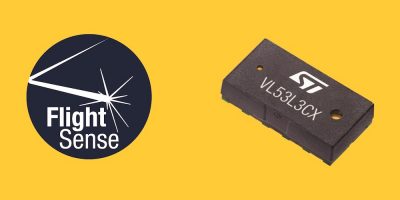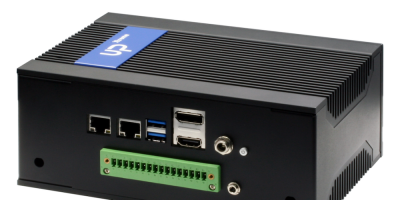STMicroelectronics has introduced a time of flight (ToF) sensor that enables multi-object ranging. The VL53L3CX can be used for industrial and personal electronics applications. It is the latest addition to the FlightSense sensors range and has patented histogram algorithms that allow measuring distances to multiple objects. It is also claimed to increase accuracy.
The VL53L3CX measures object ranges from 25mm to three metres and is unaffected by the target colour or reflection levels, unlike conventional infra red sensors, pointed out STMicroelectronics. As a result, designers can introduce product features. For example, occupancy detectors can be enabled to provide error-free sensing by ignoring unwanted background or foreground objects. They can also report the exact distances to multiple targets within the sensor’s field of view.
The patented histogram algorithms increase cover-glass crosstalk immunity and allow real time smudge compensation preventing external contamination from adversely affecting the ranging accuracy of equipment that may be used in a dusty industrial environment. Ranging under ambient lighting is also improved, noted STMicro.
Superior linearity is claimed to increase short-distance measurement accuracy enhancing wall tracking, faster cliff detection and obstacle avoidance in equipment such as service robots.
In common with the existing FlightSense sensors, the VL53L3CX has a compact package design for integration into customer devices, and low power consumption to extend battery runtime.
The VL53L3CX can be used in a variety of applications, including occupancy detection in building automation and lighting controllers, smarter proximity sensing in IoT endpoints, auto-wakeup in portable devices and robust user detection in automatic sanitary equipment. The accuracy and response times also make them suitable for devices requiring precise movement control, such as robotics and indoor drones.
The VL53L3CX is available now.







